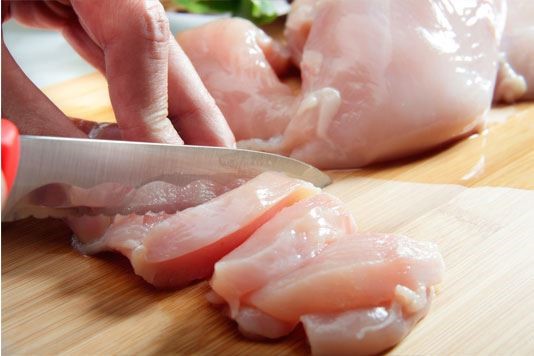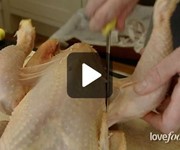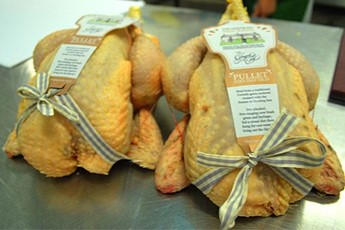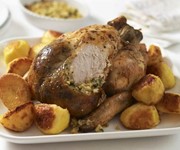Kitchen safety: top tips for handling and cooking chicken

Food safety expert Jill Taylor tells us how to handle chicken correctly so you don't end up giving your friends and family food poisoning.
You reach for the chicken in the fridge, but the use-by date was two days ago. You don’t want to waste it and it looks and smells OK, so surely it's safe to cook. Or is it?
In 2011 a research study led by The University of Manchester found that nearly 17 million people suffer from stomach upsets leading to about 11 million working days lost in the UK every year.
A survey carried out on raw chicken for retail sale by the Food Standards Agency in 2008 identified that the food poisoning bacteria campylobacter was present in 65% of samples. This was followed up in 2012 by a Which? consumer survey that showed a fall in the rate to 18% - although that was taken from a much smaller sample and was not directly comparable.
 So, if we accept that much of our raw chicken is covered in stomach-churning bacteria, what can we do to prevent giving the gift of food poisoning to our nearest and dearest? Campylobacter is easily killed by the cooking process, which should make our cooked chicken safe. But just in case, here are some simple steps that will help ensure you stay safe on that journey from purchasing your poultry to putting it on the plate.
So, if we accept that much of our raw chicken is covered in stomach-churning bacteria, what can we do to prevent giving the gift of food poisoning to our nearest and dearest? Campylobacter is easily killed by the cooking process, which should make our cooked chicken safe. But just in case, here are some simple steps that will help ensure you stay safe on that journey from purchasing your poultry to putting it on the plate.
Buying
When buying fresh chicken ensure it's being kept in refrigerated conditions (under 8°C) and check that the wrapping is well sealed, with no leaks, which could allow bacteria from the chicken to contaminate other products.
Packing
Make sure when you are packing your shopping for the journey home that any raw meat products are stored separately from other chilled goods, such as cheeses or cooked meat products that are ready to eat.
Storage
When you get your shopping home, make sure any raw meat and poultry products are stored on the bottom shelf of the fridge, well wrapped or in sealed containers, to avoid any risk of cross-contaminating products that are ready to eat. Your fridge should be running at 5°C to limit bacterial growth.
Use by dates
Always use within “use by” date code; you cannot see, smell or taste food poisoning bacteria, so the “sniff” test won’t work. Is it worth the risk?
Preparation
Don’t wash raw poultry - that just splashes bacteria all around the sink area and is unnecessary. Make sure all handling of raw poultry is carried out on a chopping board that will not be used to prepare ready-to-eat foods and that this is disinfected (either in a dishwasher, or with anti-bacterial spray or wipe) after use. Wash hands thoroughly and make sure utensils, including handles, and kitchen cloths are also disinfected after use.
Cooking
When carried out properly this process will kill campylobacter so always cook to 75°C at thickest part. (No evidence of pink or opaque meat, and that juices run clear).
Leftovers and re-heating
Any leftovers should be cooled to room temperature as quickly as possible, then wrapped and stored in the fridge (because they are cooked and ready to eat, you can store it on the middle shelf). Only re-heat once and make sure they reach 75°C again.
Don’t be one of the 500,000 people estimated to suffer from campylobacter food poisoning in the UK every year.
Have you ever had food poisoning from badly cooked or handled chicken? Let us know in the comments below...
For more food safety blogs including the “5 second rule Mythbuster” visit Jill Taylor Consulting.

 New chicken videos
New chicken videos
Portioning a chicken is easy when you know how. It can also save you money too. Here butcher Olly Seabright takes us through how to take apart a chicken.
 Win a fantastic free-range chicken
Win a fantastic free-range chicken
Andrew Webb meets some fantastic free-range chickens. You can win one (worth £30) as well as a cookery book to go with it, thanks to our friends at The Ginger Pig.
Every chicken recipe of lovefood.com
From Kievs to curry, light bites to how to classics roasts, we've got over 80 recipes for chicken. So what are you waiting for? Get cooking!
Comments
Be the first to comment
Do you want to comment on this article? You need to be signed in for this feature
